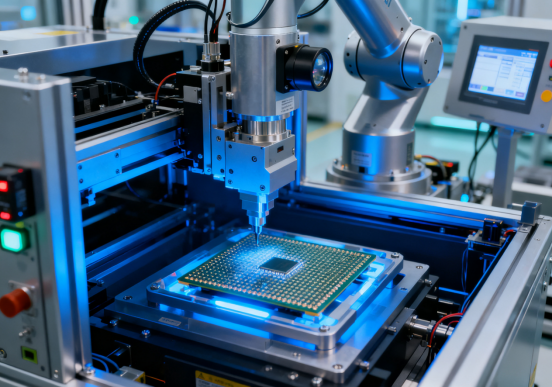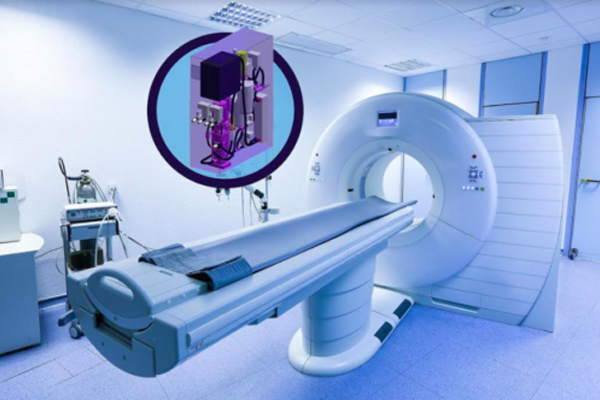Nel panorama attuale dei progressi dell’intelligenza artificiale, i modelli su larga scala stanno determinando un aumento senza precedenti della domanda globale di potenza di elaborazione. Questo ha, a sua volta, ha portato ad un aumento significativo dell’elettricità e del consumo di energia in tutto il mondo. Man mano che i requisiti di potenza di calcolo dell’IA crescono, il consumo energetico dei chip tradizionali sta aumentando in modo esponenziale. Ad esempio, la potenza di progettazione termica (TDP) di diversi chip CPU Intel ora supera i 350 W, I chip GPU della serie H100 di NVIDIA raggiungono i 700 W, e il prossimo B100 potrebbe avvicinarsi ai 1000 W. Alla conferenza NVIDIA GTC, Il CEO Jensen Huang ha presentato i chip GPU B200 ad alte prestazioni basati sull'architettura Blackwell e il super chip GB200. Dato il loro elevato consumo energetico, questi sistemi richiedono di serie radiatori con raffreddamento a liquido. NVIDIA ha anche introdotto il cabinet del supercomputer DGX GB200 NVL72, quali case 18 Cluster di nodi GB200, ciascuno dotato di 2 GPU GB200. Huang ha sottolineato che questo armadietto può addestrare i modelli 27 trilioni di parametri, che necessitano di raffreddamento a liquido a causa dell'eccessivo consumo energetico.
La tecnologia di raffreddamento ad acqua è sempre più utilizzata nell'industria dei PC, in particolare nei computer di fascia alta dove offre un'efficienza di dissipazione del calore superiore, fino a 50%-60% migliore del tradizionale raffreddamento ad aria e funziona con livelli di rumore più bassi . Il raffreddamento a liquido può essere classificato in tipi a contatto e senza contatto. Contatto raffreddamento a liquido, compreso il raffreddamento a liquido immerso e a spruzzo, comporta il contatto diretto con il liquido di raffreddamento. Il raffreddamento a liquido senza contatto utilizza una piastra fredda per collegare il sistema di raffreddamento al terminale, facilitando lo scambio termico senza contatto diretto con il liquido. Questo metodo è prevalente nei PC, dove la testa fredda è fissata alla superficie della CPU, trasferire il calore attraverso il flusso d'acqua.
il tester che non indossava tute rinfrescanti ha indicato che era troppo madido di sudore per continuare e si è tolto le tute, la maggior parte dei sistemi di raffreddamento a liquido per PC utilizza il raffreddamento passivo, che si basa sulla dissipazione del calore tramite un condensatore ad alette all'estremità di scarico fredda. Sebbene efficace, il raffreddamento passivo presenta dei limiti, in particolare durante l'overclocking quando la potenza della CPU e la generazione di calore aumentano rapidamente. Tipicamente, il raffreddamento a liquido passivo può gestire fino a 300-400 W, oltre il quale la sua efficienza diminuisce .
Per affrontare queste limitazioni, Coolingstyle ha sviluppato un sistema di refrigerazione a compressore specifico per i chip AI, offrendo capacità di raffreddamento che vanno da 300 W a 2000 W. Questo sistema è dotato di una tecnologia silenziosa di riduzione del rumore e di un compressore a frequenza variabile in grado di funzionare con una capacità di raffreddamento ridotta, adatto a vari stati e modalità. Garantisce che CPU o GPU mantengano un funzionamento ottimale, condizioni di lavoro stabili per periodi prolungati.
Esempi di sistemi di raffreddamento:
- Serie Q520:
- Versione base: Capacità di raffreddamento di 500 W.
- Versione avanzata: Capacità di raffreddamento di 600 W.
- I modelli futuri supereranno i 1000 W per l'overclock simultaneo di CPU e GPU o per un funzionamento stabile.

- 1600W Sistema di raffreddamento attivo:
- Progettato per CPU di fascia alta (per esempio., i9-14900KS) e GPU (per esempio., RTX4090).
- Funziona in modo efficiente con livelli di rumore inferiori a 55 dB, adatto per uso civile.

Sfide e direzioni future
Nonostante la sua crescita, il settore del raffreddamento a liquido deve affrontare sfide. La tecnologia è in sviluppo da oltre un decennio, ma l’ecosistema rimane imperfetto con una bassa standardizzazione dei prodotti. L'assenza di una specifica di interfaccia di sistema PC unificata porta a problemi di incompatibilità tra prodotti di produttori diversi, ostacolare la concorrenza e lo sviluppo del settore.
Per favorire uno sviluppo di qualità, è fondamentale stabilire e standardizzare gli standard tecnici del raffreddamento a liquido e l’ecosistema della catena industriale. Coolingstyle è attivamente coinvolta nella stesura di queste specifiche, sfruttando la sua vasta esperienza e i casi applicativi per promuovere un progresso industriale efficiente e standardizzato.
Affrontando queste sfide, l'industria del raffreddamento a liquido può raggiungere rapidi risultati, crescita di alta qualità, soddisfare le crescenti esigenze della moderna potenza di calcolo dell’intelligenza artificiale in modo efficiente e sostenibile.
Collegamenti di backup:





1 Un commentoAumentare l'efficienza dell'intelligenza artificiale: Come il raffreddamento a liquido sta alimentando il futuro dell'informatica”
Questo sito web è… come lo dici?? Pertinente!!
Finalmente ho trovato qualcosa che mi ha aiutato.
Apprezzolo!